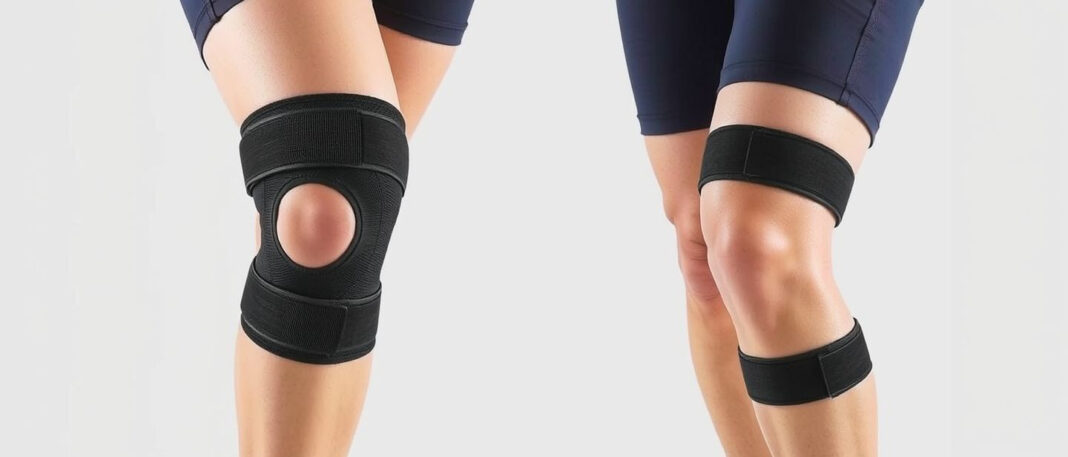Choosing the best knee support for running is a decision every serious runner faces. In my 15 years leading sports wellness teams, I’ve seen countless athletes struggle with knee pain, often because they picked the wrong support.
The right knee support for running can make the difference between a pain-free run and a frustrating setback. What works for one runner may not suit another, so it’s crucial to understand your needs and the options available. Here’s what I’ve learned from real-world experience.
Why Knee Support Matters for Runners
Knee support for running isn’t just about comfort—it’s about injury prevention and performance. I’ve seen runners push through pain, only to end up sidelined for weeks.
The best knee support for running stabilizes the joint, reduces strain, and helps maintain proper form. In the UK, where weather and terrain can be unpredictable, having reliable support is even more important. Many runners underestimate how much impact their knees take, especially on hard pavements or uneven trails.
Types of Knee Support for Running
There are several types of knee support for running, each suited to different needs. Compression sleeves offer mild support and warmth, while hinged braces provide more stability for those with previous injuries.
Patellar straps target specific pain points, and wraparound supports allow for adjustable tightness. In my experience, most runners benefit from a compression sleeve for everyday use, but those with recurring issues may need something more robust. The key is matching the support to your specific situation.
How to Choose the Best Knee Support for Running
Choosing the best knee support for running involves more than just picking the most popular brand. Fit, material, and intended use all matter. I once worked with a client who bought a top-rated brace online, only to find it too bulky for running.
The best knee support for running should be comfortable, breathable, and allow for a full range of motion. Don’t just rely on reviews—try it out if possible, and consider your running style and any existing knee issues.
Common Mistakes When Using Knee Support
Many runners make mistakes when using knee support for running. Some wear it too tight, restricting blood flow and causing discomfort. Others rely on it as a cure-all, ignoring underlying issues like poor form or weak muscles.
I’ve seen runners skip proper warm-ups because they felt “protected” by their support. The reality is, knee support for running is just one part of a broader injury prevention strategy. It should complement, not replace, good training habits.
Real-World Tips for Getting the Most from Your Knee Support
From a practical standpoint, getting the most from your knee support for running means using it wisely. Wear it during runs, but also consider recovery and strengthening exercises.
I’ve found that runners who combine knee support with targeted strength training see better results. Don’t wait until pain strikes—start using support early if you’re prone to knee issues. And always listen to your body; if something feels off, reassess your approach.
Conclusion
The best knee support for running is a personal choice, shaped by your experience, needs, and running style. In my years of working with athletes, I’ve learned that the right support can boost confidence and performance, but it’s not a magic fix.
Combine it with smart training, proper form, and attention to your body’s signals. For UK runners, where conditions can be tough, investing in quality knee support for running is a smart move.
What is the best knee support for running?
The best knee support for running depends on your needs, but compression sleeves are popular for everyday use. They offer mild support, comfort, and breathability, making them ideal for most runners. Always consider fit and material for optimal results.
How do I know if I need knee support for running?
If you experience knee pain, instability, or have a history of injury, knee support for running can help. It’s also useful if you run on hard surfaces or uneven terrain. Listen to your body and consult a professional if unsure.
Can knee support for running prevent injuries?
Knee support for running can reduce the risk of injury by stabilizing the joint and reducing strain. However, it’s not a substitute for proper training, warm-ups, and strength exercises. Use it as part of a broader injury prevention strategy.
How tight should knee support for running be?
Knee support for running should be snug but not restrictive. It should allow for a full range of motion and not cut off circulation. If you feel numbness or discomfort, it’s too tight.
How long should I wear knee support for running?
Wear knee support for running during your runs and for recovery if needed. Don’t wear it all day unless advised by a professional. Overuse can weaken muscles and reduce natural support.
Can I wear knee support for running every day?
Yes, you can wear knee support for running daily if it’s comfortable and recommended. However, balance it with strength training and rest to avoid dependency and muscle weakness.
What materials are best for knee support for running?
Look for breathable, moisture-wicking materials like neoprene or compression fabric. These keep the knee dry and comfortable, reducing irritation during long runs.
How do I clean knee support for running?
Hand wash knee support for running with mild soap and water. Air dry it away from direct heat. Avoid harsh detergents or machine washing, as this can damage the material.
Are there different knee supports for different types of running?
Yes, some knee supports are designed for road running, while others suit trail or off-road running. Choose one that matches your running style and terrain for best results.
Where can I buy the best knee support for running in the UK?
You can buy knee support for running from sports shops, pharmacies, and online retailers in the UK. Look for reputable brands and read reviews to find the best fit for your needs.

